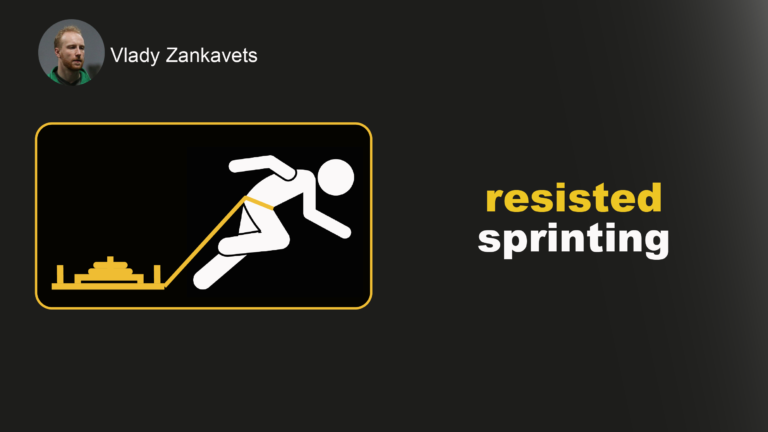
🏒 During a hockey game most of the 💨 spurts are performed on SHORT DISTANCES (35% <5 meters, 44% 6-10 meters)📏[1]. It means that ACCELERATION phase of sprinting has a HIGH IMPORTANCE in hockey 🥅. EFFECTIVENESS of its development could be ENHANCED, taking into account that the DIRECTION OF FORCE ⬅️ application during acceleration phase of sprint has a GREATER IMPACT on performance than the amount of force applied 💪🏻 [2].
The use of SLED RESISTANCE 🛷 is an EFFICIENT APPROACH to development of the ACCELERATION PHASE of sprinting🏃♂️, as it helps to:
☑️ increase FORCE OUTPUT 💪🏻,
☑️ orient this FORCE more HORIZONTALLY ⬅️[3].
Since off-ice sprint performance of hockey players has VERY STRONG CORRELATION ⬆️ with on-ice speed ⛸, it is logical to assume that the off-ice SPEED DEVELOPMENT will lead to POSITIVE CHANGES in on-ice speed [4]. We perform the 1st SET of sled resisted sprinting OFF-ICE and the 2nd SET - ON-ICE. It provides a sufficient rest interval and allows to TRANSFER force and skill of it efficient application FROM OFF-ICE to ON-ICE.
Thank You for reading!
References:
1. Zankavets, U. An analysis of acceleration of the KHL professional ice hockey players.
2. Morin, JB, et al. Technical ability of force application as a determinant factor of sprint performance.
3. Lahti, J, et al. Changes in sprint performance and sagittal plane kinematics after heavy resisted sprint training in professional soccer players.
4. Zankavets, U, Popov, VP. Interconnection of speed, speed-strength and strength abilities of professional hockey players on-ice and off-ice.